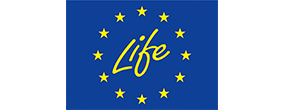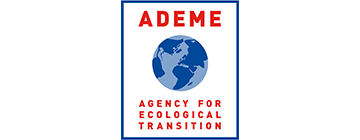Overview
In 2021, final energy consumption in France reached 138.4 Mtoe, 5% below its 2000 level and 6% above 2020 level, while tactivity measured in terms of GDP has increased by 26%. Transport is still the largest consuming sector with a share of 31% in total final energy consumption in 2021 as well as in 2000, the base year. Over the same period, the residential sector, the second largest in terms of final energy consumption, increased from 28% to 30% of the total. The share of services stayed roughly stable, from 15.4% in 2000 to 15.8% in 2021, while industry’s share decreased by 2.5 percentage points from 22.1% to 19.6%.
Figure 1: Final energy consumption by sector (normal climate) in million tonnes of oil equivalent (Mtoe)
Source: ODYSSEEEnergy efficiency for final consumers, as measured by ODEX (an indicator which measures the energy efficiency progress by main sector and for all end-uses), improved by an average of 1.2%/year from 2000 to 2021, or 23% over the period, with an overall deceleration of improvements from 2014 onwards (with sectoral differences). The residential sector achieved the largest gains (1.8%/year). Energy efficiency progress has been continuous in the services and transport sectors, with respectively a 1% and 0.9% gain per year since 2000. Although, since 2018, the pace of gains in the services sector has increased, reaching 2.6%/year on average. After seeing massive improvements in the early 2000s, energy efficiency gains in the industry have been marginal since 2013 (0.1%/year), and literally no changes were observed between 2020 and 2021.
Figure 2: Technical Energy Efficiency Index
Source: ODYSSEEEnergy efficiency is a central principle in the French ecological transition strategy. The Energy Transition Act of 2015 introduced a provision aimed to halve final energy consumption between 2012 and 2050. The Multiannual Energy Programming and the National Low-Carbon Strategy are the two planning documents helping to achieving energy efficiency objective in the short and long run. In 2014, to comply with the Energy Efficiency Directive, France adopted its third National Energy Efficiency Action Plan (NEEAP) setting a final consumption target of 131.4 Mtoe in 2020, which was nearly reached with a consumption of 132 Mtoe (SDES). It should be noted that the Covid-19 pandemic is likely responsible for the drop in final energy consumption. The draft National Energy and Climate Plan, replacing the NEEAP, sets a target of 30% reduction in final energy consumption in 2030 compared to 2012, which leads to 104.0 Mtoe of final energy consumption in 2030 or 30 Mtoe of savings compared to 2021 (22%). The two main cross-cutting measures enabling France to reach its energy savings target are: i) the Heat Fund, and ii) the Energy Saving Certificates scheme, which sets a 3100 TWhc savings target for the 5th period (2022-2025), 45% above the 4th period target. In particular, more than 600TWhc of Certificates were delivered to the residential sector in 2022. Notably, the French government is drafting a roadmap on energy sufficiency.
Table 1: Sample of cross-cutting measures
| Measures | NEEAP measures | Description | Expected savings, impact evaluation | More information available |
|---|---|---|---|---|
| Energy Saving Certificates (ESC) | yes | The ESC scheme obliges energy retailers and fuel suppliers to meet specified energy saving. Obligated parties meet these targets by encouraging their customers, mainly in the building sector, to reduce their energy consumption. | High | Link |
| Heat Fund | yes | The Heat Fund supports the production of heat from renewable energies, as the development of the use of biomass (forestry, agricultural, biogas, etc.), geothermal energy (through direct use or by means of heat pumps), solar, thermal energy, recovered energies, and also development of heat networks using these energies. | High | Link |
Buildings
In the residential sector, final energy consumption is oscillating between 40 Mtoe and 43.5 Mtoe since 2000 (corrected for climate fluctuations). In 2021, space heating accounted for 68% of the sector’s consumption, electrical appliances for 16%, water heating for 10% and cooking for 5%. Energy consumption per m2 for space heating has decreased by 28% over the period (Figure 3). However, there has been a slowdown in energy efficiency progress for space heating, from 2% per year before 2014 to 0.8% until 2021. Electrical appliances and lighting consumption per dwelling recorded a 15% increase between 2000 and 2021, which can be explained by the increasing number of connected devices. In the meantime, energy consumption for all other uses stayed constant at around 0.22 toe/dw (see Figure 4).
Figure 3: Energy consumption of space heating per m² (normal climate) in kilo of oil equivalent
Source: ODYSSEEFigure 4: Energy consumption per dwelling by end-use (except space heating) in tonnes of oil equivalent
Source: ODYSSEEThe final energy consumption of households was 1.8 Mtoe higher in 2021 than in 2000 (Figure 5). On the one hand, two main factors contributed to increase energy consumption over the period – one of demographic nature, i.e. more dwellings (8.8 Mtoe), and a socio-economical factor related to equipment ownership (5.3 Mtoe for “more appliances per dwelling”). Even though the increase of the size of dwelling contributed to a higher energy consumption on the period, the effect stayed marginal. On the other hand, energy savings (17 Mtoe) offset most of the effect of the socio-economical drivers.
Figure 5: Main drivers of the energy consumption variation of households in million tonnes of oil equivalent
Source: ODYSSEEIn the service sector, the total energy consumption per m² decreased by 0.4%/year since 2000 (Figure 6). However, electricity consumption per m² was increasing by 1.1%/year until 2012 with the diffusion of IT and electrical appliances, even though they are getting more efficient. From 2012 onwards, electricity consumption in services has been decreasing, with an important drop between 2019 and 2020 likely due to lockdowns during the Covid-19 pandemic. A rebound can notably be observed in 2021.
Figure 6: Energy and electricity consumption per m² (normal climate)
Source: ODYSSEEIn France, the first thermal building code (RT) was implemented in 1974 and has been updated and strengthened seven times since then. The last update (RE2020) is particularly ambitious with a maximum consumption of 100 kWh/m2 for all end-uses. Still, three quarters of the current building stock was built without building codes. As a result, and despite the great efforts made since year 2000, the average performance of the building stock in terms of energy consumption per m² is one of the worst in Europe. Hence, to bring down energy consumption to a BBC level for the full building stock by 2050 (Ecological Transition Law), the government has set ambitious targets, such as the retrofitting of 500,000 existing dwellings each year, of which half should be occupied by vulnerable consumers. The Energy and Climate Act of 2019 also sets a new target to renovate all the “thermal sieves” within 10 years. To support thermal renovation in the residential sector, around €5.6 billion were invested by the government in “MaPrimeRénov’”, a state subsidy scheme. Furthermore, around 68% of the services sector’s building stock is now subjected to the Éco Énergie Tertiaire rule, which requires a 60% reduction in final energy consumption by 2050 compared to 2010 levels. The French government offers a mix of policy regulations, incentives and support targeting both residential and commercial buildings, for instance:
Table 2: Sample of policies and measures implemented in the building sector
| Measures | Description | Expected savings, impact evaluation | More information available |
|---|---|---|---|
| Building codes “RE 2020”-new buildings | Requires all new buildings to produce more energy than it consumes based on the principle of positive energy buildings (PEB), (i.e., new residential buildings are required to have a primary energy consumption lower than a threshold 100 kWh/m²/year of all end-uses, varying by climate zone). | High | Link |
| Building codes -renovation | Asks that each building with a surface area more than 1000m² meet a global energy performance target. Concerning other residential buildings, the element-by-element thermal regulation (called RT element) sets a minimum performance level for elements replaced or installed. | Medium | Link |
| Subsidy for thermal renovation of private dwellings “MaPrimeRénov’” | State subsidy accessible to all owners of a main residence to finance insulation, efficient heating and ventilation systems or energy audit works. The level of the aid (up to 20k€/dwelling) depends on the household’s income and can be improved for work on very poorly insulated dwellings. | High | Link |
| Éco-Énergie Tertiaire | Regulatory obligation imposing a 40% reduction in the services sector’s final energy consumption by 2030. Building owners also have a reporting obligation to measure progress. | High | Link |
Transport
In 2021, similarly to 2000, road transportation accounted for 93% of the sector’s consumption 56% of which can be inputted to cars. The remaining was split among rail (2%), domestic air transport (3%), and inland waterways (1%).
Figure 7: Distribution of transport energy consumption by mode
Source: ODYSSEEThe traffic of passengers, measured in passenger-kilometres, has been slightly increasing since 2000 (by 3%). The share of public transport in total traffic has decreased by 1 percentage point compared to 2000, with buses representing 5% and trains 10% of the total in 2021.
Figure 8: Modal split of inland passenger traffic
Source: ODYSSEEWhile the traffic of passenger is steadier, the traffic of goods is more impacted by economic cycles. However, in the long-run, the traffic of goods (measured in ton-kilometre) only increased by 4% from 2000 to 2021. There was a significant decrease of the share of both rail traffic (-7. pp) and waterway traffic (-1 pp) compared to 2000, which led to a higher share of road traffic (trucks and light duty vehicles) in 2021 (87%).
Figure 9: Modal split of inland freight traffic
Source: ODYSSEETransport energy consumption was 2.2 Mtoe lower in 2021 than in 2000, which can be driven by different factors as shown in Figure 10. This trend is explained by energy savings (-6.6 Mtoe) partially compensated by the growth in traffic (+1.9 Mtoe). Gains in energy efficiency might also be compensated by inefficient use of transportation, such as a low load factor (2.3 Mtoe captured in “Others”).
Figure 10: Main drivers of the energy consumption variation in transport
Source: ODYSSEEFrench energy efficiency policies in the transport sector, the largest in terms of final energy consumption, are geared towards the compete decarbonization of the sector by 2050. They are mainly based on two points: i) Support for low emission modes of transport (modal shift); ii) Increase the penetration of efficient modes of transportation. Financial and fiscal incentives are used to encourage modal shift towards less energy-intensive means of transportation. Key measures include the ecological bonus-malus scheme (Bonus écologique) for new cars that is regularly revised, but also sustainable mobility allowances provided by companies to their employees to encourage modal shift. The ECS scheme is also applicable to activities in the transport sector such as carpooling or the procurement of less energy-intensive vehicles to replace a fleet. Energy efficiency measures are also driven by European directives setting mandatory standards for emissions from new vehicles, with the latest directive 2019/631/EC setting emissions targets for 2025 and 2030.
Table 3: Policies and measures into force in the transport sector
| Measures | Description | Expected savings, impact evaluation | More information available |
|---|---|---|---|
| Carbon tax | The 2014 fiscal law introduced a carbon tax on fossil fuels. The tax rate was raised from €7/tCO2 in 2014 to €44.6/tCO2 in 2018. The Finance Law 2018 set the carbon tax level at €56/tCO2 in 2020 and €100/tCO2 in 2030. However, its level remained unchanged since 2018 due to social protests. Revenues from the tax are used to finance the development of renewables | High | Link |
| Bonus malus | The bonus-malus scheme (called bonus écologique), based on the CO2 emissions per km, supports the purchase of vehicles with low CO2 emissions by giving bonus (up to €4,000) and penalizes the purchase of high emissions vehicles (more than 118gCO2/km in 2024) and heavy vehicles (1.6t) by giving a malus, respectively up to €60,000 (for cars with emissions higher than 193gCO2/km) and €30/kg(for cars heavier than 2.1t). | High | Link |
| Voluntary commitments to reduce CO2 emissions | The programme provides participating transport operators with a framework and methodological tools in order to reach self-imposed emissions targets by acting on their vehicles fleet, the fuel choice, on drivers and on the company organization. | Medium | Link |
Industry
Final energy consumption of industry decreased significantly between 2000 and 2021, by 0.8%/year on average, to stand at 27.2 Mtoe. Around 56% of the sector’s energy consumption remain concentrated in 5 energy intensive branches; 22% are consumed in the chemical industry, 14% in non-metallic minerals, 9% in paper, pulp and printing, 8% in steel, and 4% in non-ferrous metals industries. The chemical industry share showed the biggest increase from 17% to 22% over the period, which can be explained by the development of the petrochemical industry and the intensification of the use of plastics but also by the contraction of energy consumption in all other branches except the steel industry.
Figure 11: Final energy consumption of industry by branch
Source: ODYSSEEAmong energy-intensive products, energy consumption per unit of cement has fluctuated: it had fallen by 23% in 2017 compared with 2000, before rising again (-16% compared with 2000 in 2021). After important energy efficiency gains at the beginning of the period, energy consumption by ton of paper products went back to its 2000 level in 2021. Steel industry, on the other hand, has experienced an upward trend between 2004 and 2016, before returning below the energy consumption by unit of 2000 in 2020; it surged in 2021.
Figure 12: Unit consumption of energy‐intensive products (toe/t)
Source: ODYSSEEFigure 13 shows the drivers of the change in final energy consumption in the industrial sector. Since 2000, most factors contributed to a decrease in industrial energy consumption (-5 Mtoe between 2020 and 2021) to stand at 27.1 Mtoe in 2021. The drop in industrial activity (-2.5 Mtoe), structural changes towards less energy-intensive branches (-2.2 Mtoe) and mainly energy savings (-6.5 Mtoe) can explain the downward trend. This reduction in energy consumption is partly offsets by other effects (+6.3 Mtoe), including energy savings, that had a much lower impact because of a lower renewal rate of equipment and inefficient operations.
Figure 13: Main drivers of the energy consumption variation in industry
Source: ODYSSEEThe French energy efficiency policies for the industry mainly rely on market instruments, with the EU-ETS and Energy Savings Certificates schemes, which are going to be extended to entities submitted to the EU-ETS in 2024 as an experiment. Regulatory measures are requiring mandatory energy audits every four years, under the transposition of the Energy Efficiency Directive (2012/27/EU). In 2020 the French Government adopted the France 2030 plan that directs €5.6Md of subsidies towards industrial decarbonisation, which complement other financial incentives targeting energy efficiency and low-carbon industrial heat, also supported by ADEME’s Heat Fund. Financing instruments are also available to help industries comply with energy efficiency regulation, such as targeted loans for SMEs or investment subsidies.
Table 4: Policies and measures into force in industry
| Measures | Description | Expected savings, impact evaluation | More information available |
|---|---|---|---|
| Loans for SMEs | This measure includes two kind of loans, "Energy saving loan" & " Green loan" which are available for SMEs which want to improve their energy efficiency (installation of efficient equipment eligible to ESC scheme, work to bring them up to standard…), and the second to improve the environmental performance of their industrial processes or their products. | Low | Link |
| Mandatory energy audit | Large firms (with more than 250 employees or revenues exceeding 43 million euros) are obliged to make energy audits every four years. It concerns around 5,000 firms in France. | Low | Link |



